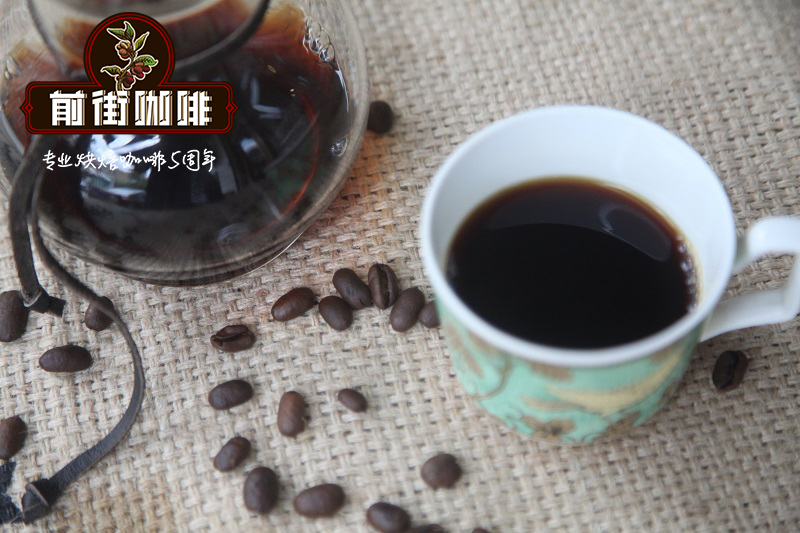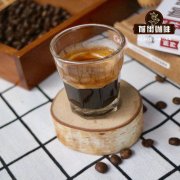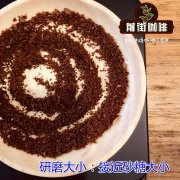Introduction to the Origin of Brazilian South Minas Honey Squirrel Coffee

Professional coffee knowledge exchange more coffee bean information please follow the coffee workshop (Wechat official account cafe_style)
The Brazilian coffee producing region-South Minas, one of the three major boutique coffee producing areas in Brazil, especially this Brazilian-honey squirrel, highlights its balance and sweetness by medium roasting, and its mellow degree is almost as high as fat. Gently take a sip of coffee and close your eyes and feel that the unique mellow and fragrance of coffee slowly seeps from the mouth to the depths of the body, if with some dessert. To tell you the truth, the beautiful goddesses around you can't help but get close to you.
If we think of coffee as a beautiful dress, what we like is its materials and the tailoring and workmanship that match it. Then the coffee bean itself is like the fabric, the quality has been determined by the geographical environment in which it grows, and what can add color to it depends on the picking and handling of the coffee fruit.
Although Brazil is one of the countries with the most abundant freshwater resources in the world, the distribution of water resources is uneven, and many areas rely on natural draught. Especially in the east where coffee cultivation is concentrated, serious droughts often occur, and scarce water resources limit the way coffee is processed. Before 1990, almost all Brazilian coffee used rough sunbathing, and its quality varied greatly. Because the coffee fruit is exposed to the sun for as long as two to three weeks, when the rain returns to the tide or the fruit is cracked, it will become moldy and produce a bad smell. As a result, Brazilian beans have become synonymous with low-and middle-quality. As the world's largest coffee producer, how can it be reconciled to such a reputation? in order to improve its quality and reverse its image, Brazil carried out a quality revolution in the 1990s and vigorously promoted the global half-sun method.
Based on the drier climate in Brazil, research units in Brazil have developed a half-sun method to shorten the treatment time. After removing the pulp, the coffee fruit will be exposed to the pectin-coated pods for one to three days, and then machine-dried to a moisture content of 12%, which can be put into a storage container. The Brazilian half-sun method greatly shortens the work time (the traditional sun method takes two to three weeks), also reduces the chance of coffee beans getting a bad smell, and the quality is greatly improved. Moreover, the half-sun method also inherits the advantages of the sun method to improve the sweetness, but reduces the thankless soil flavor, and enhances the fruit aroma and sweetness, so it is most suitable for a single product, so the half-day method has become a necessary "wardrobe" for Brazilian boutique beans and won praise from international coffee experts.
The success of the reform has increased the confidence of coffee farm operators. Coffee farms in Brazil will choose solarization, half-sun, washing, half-washing or honey treatment, which is very popular in the boutique coffee industry in recent years, according to the dry and humid climate. To show the best regional flavor. For example, Serrado in the Midwest of Minas, where the humidity is ultra-low, is still mainly in the sun. The manor here believes that as long as the sun is strictly controlled, it can best highlight Serrado's unique nutty flavor and sweetness, while half-sun has become a supporting role in Serrado. The manor in South Minas is the most inclusive, using half-sun, sun and water, respectively. Brazilian coffee is so diverse in terms of processing that it is rarely seen in the world except in Ethiopia, where it is from.
END
Important Notice :
前街咖啡 FrontStreet Coffee has moved to new addredd:
FrontStreet Coffee Address: 315,Donghua East Road,GuangZhou
Tel:020 38364473
- Prev

What is Brazilian pectin sun-cured coffee? What is the difference between pectin sun-cured coffee and ordinary sun-cured coffee beans?
Professional coffee knowledge exchange more coffee bean information please follow the coffee workshop (Wechat official account cafe_style) Brazilian coffee pectin sun drying coffee beans lift the sun, the most widely used is Brazilian coffee; the disadvantage of the sun method is easy to mix defective beans, bean and bean appearance poor dry treatment (secado), also known as natural full-time drying (natural). The method of tanning is
- Next

Brazilian Queen COE Fine Coffee beans _ Analysis of semi-washed Yellow bourbon Baking and Cooking in Queen's Manor of Brazil
For more information about coffee beans, please follow the Coffee Workshop (official Wechat account cafe_style) the Brazilian Coffee Queen's Manor semi-washed Yellow bourbon Introduction by Chris Kornman introduction this Brazilian coffee comes from FazendaRainha (Queen's Manor), which covers an area of 280mu and is located in Vale da Grama, an ancient volcanic valley in Brazil.
Related
- Detailed explanation of Jadeite planting Land in Panamanian Jadeite Manor introduction to the grading system of Jadeite competitive bidding, Red bid, Green bid and Rose Summer
- Story of Coffee planting in Brenka region of Costa Rica Stonehenge Manor anaerobic heavy honey treatment of flavor mouth
- What's on the barrel of Blue Mountain Coffee beans?
- Can American coffee also pull flowers? How to use hot American style to pull out a good-looking pattern?
- Can you make a cold extract with coffee beans? What is the right proportion for cold-extracted coffee formula?
- Indonesian PWN Gold Mandrine Coffee Origin Features Flavor How to Chong? Mandolin coffee is American.
- A brief introduction to the flavor characteristics of Brazilian yellow bourbon coffee beans
- What is the effect of different water quality on the flavor of cold-extracted coffee? What kind of water is best for brewing coffee?
- Why do you think of Rose Summer whenever you mention Panamanian coffee?
- Introduction to the characteristics of authentic blue mountain coffee bean producing areas? What is the CIB Coffee Authority in Jamaica?

